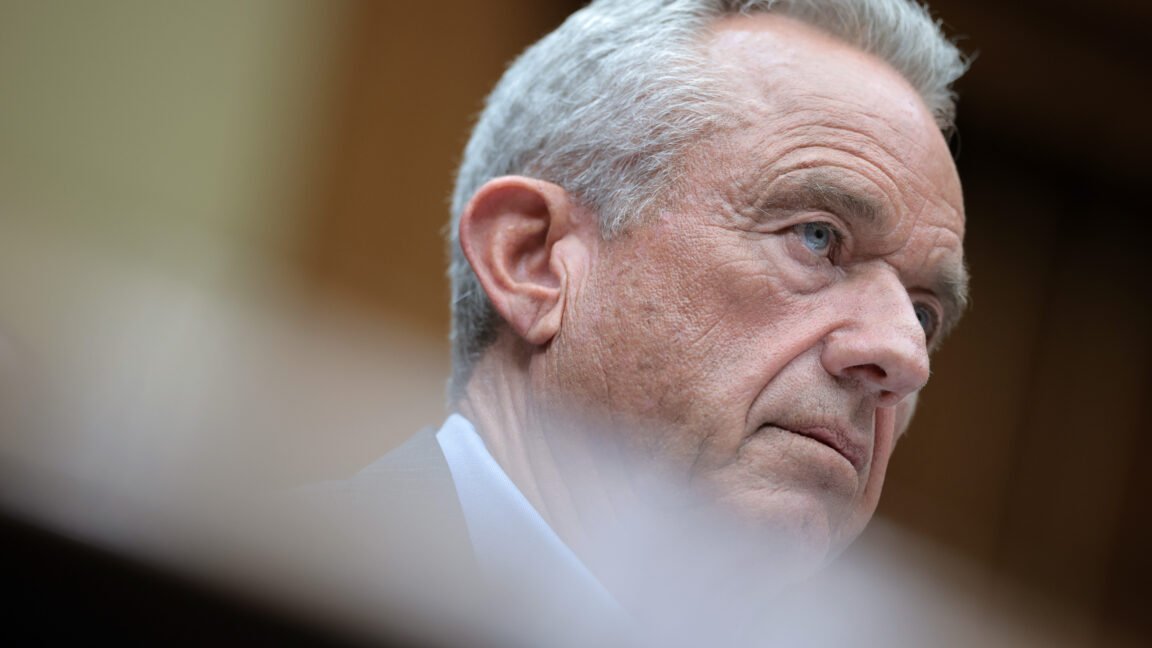Only a week has passed since two Oklahoma Board of Education members complained about seeing nude women appear on a TV set during an official board meeting. And yet we've already reached the "just asking questions" stage of the scandal lifecycle, with the state's hard-right education boss wondering aloud if Oklahoma's governor might not be behind the whole thing.
On the surface, this appears an odd reaction. One might have expected Superintendent of Public Instruction Ryan Walters to agree with his outraged board members. You know, a sort of "Together we will unmask the degenerates who are making a mockery of our meetings with their streaming retro pornography!"
But no. Walters first put out a press release, titled "Response to the Most Absurd, False, and Gutter Political Attack from a Desperate, Failing Establishment," in which he said that "any suggestion that a device of mine was used to stream inappropriate content on the television set is categorically false."
Since then, Walters has just kept throwing metaphorical tanks of gasoline into this dumpster fire of a situation. On July 29, he recorded a video statement to X (formerly Twitter) in which he called the scandal the "nastiest political attack" and said it was based on "lies by board members." He then said the board members in question should "resign immediately in disgrace over the lies they have pushed about me."

Ryan Walters is just wondering: What if the governor is behind it all?
He also held a more traditional press conference, standing at a podium filled with media company microphones, where he repeatedly said that the media are liars and that no one trusts them. (Shortly thereafter, he took questions from them.)
He also asked whether Oklahoma's governor had perhaps prompted the board members—whom the governor appointed—to make up the accusation as part of a coordinated smear campaign against him. "Did he direct these board members to lie about me?" Walters asked.
Next up were promises of retribution. "When you decide to lie about me in the way that several have," Walters said, "there will be consequences for those lies."
Finally, he claimed that the whole issue had already blown over because his name was "cleared" by investigators—so what are we even doing here, really, when the hard-working people of Oklahoma need him to fight for them?
The Oklahoma County Sheriff's Office, which has been handling the law enforcement side of the investigation, has not backed this narrative. Instead, it issued a Facebook statement on the afternoon of July 29 "to clear up any confusion." The statement noted that "this investigation is still in its infancy, so it would be inappropriate to discuss who we plan to speak with or any evidence we are seeking."
If anything, the investigation appears to be ramping up. On July 30, the Oklahoma County District Attorney asked the State Bureau of Investigation to join the Sheriff's Office investigation, the goal of which was to see "whether the State Superintendent of Public Instruction—or any other individual—improperly exhibited obscene material during executive session of the board meeting."

Behold! The actual TV from the incident.
Credit:
Alias
Forensics
As for "the scene of the crime," investigators have already been to the Department of Education building and looked over the TV in question.
According to a July 30 report from Alias Cybersecurity, the device in question is a 55-inch Samsung that was connected to an office Wi-Fi network and had Airplay and separate"remote access" capabilities, including screen-sharing support. (Airplay was set up to require a pairing code upon first connection but not thereafter.)
Unfortunately, given the "limited logging capabilities" on the TV, nothing could be determined about what it might have displayed during the board meeting.
But Alias did suggest that investigators interview everyone in the room during the meeting, identify any devices that those people had with them, and then "perform a forensic examination of those identified devices, including looking at application logs and casting history."

Three state Board of Education members—Carson, Deatherage, and Tinney—sit for an interview with NEWS 9.
A Gilligan-type hat
In an interview yesterday with local TV station NEWS 9, the board members who filed the complaint expanded on what had happened in the controversial meeting last week.
We already had one account, from board member Becky Carson. As the board listened to a parent make a plea to have her child transferred to a different school, nude women allegedly appeared on the TV behind Walters. According to Carson:
I was like, "Is that woman naked?" And then I was like, "No, she’s got a body suit on." And it happened very quickly, I was like, "That is not a body suit." And I hate to even use these terms, but I said, "Those are her nipples." And then I was looking closer, and I got a full-body view...
In the new interview, we get more detail from board member Ryan Deatherage. And it is... weird.
"It was an older video," he said. "It was more grainy... maybe Three’s Company time frame, maybe MASH. The clothing reminded me of a red and white striped shirt... a guy with a white hat, kind of a Gilligan-type hat." (Deatherage had previously described the video as featuring nude women near some kind of "chiropractic table.")
Carson, who filed the initial complaint over the situation, talked about the vibe in the room when the images appeared.
Carson: I basically treated [Walters] like a 15-year-old son. I said, "What am I watching? What is on your TV? Get it off now." He looked at me and then turned around and said, "Oh my gosh," and stood up, picked up the remote... he goes, "I can’t get it off." And I said, "Get it off immediately. Get it off now."
Q: Did Walters appear shocked by the images?
Carson: I don’t think it was shock of what he was seeing. I think it was his reaction to being caught. I compare it to a teenage kid that’s been caught doing something wrong.
[Third board member] Mike Tinney: He turned around, looked at it, got out of his chair very rapidly... He came back down and sat down in his chair, didn’t say anything. And we just kind of looked at each other like, "What just happened?" And then we just went back to work.
As for the suggestion that they were asked to lie by the governor, Carson said that this was "almost ludicrous."
The board meets again on August 28. It promises to be awkward.
Read full article
Comments



 Ryan Walters is just wondering: What if the governor is behind it all?
Ryan Walters is just wondering: What if the governor is behind it all?
 Behold! The actual TV from the incident.
Credit:
Alias
Behold! The actual TV from the incident.
Credit:
Alias
 Three state Board of Education members—Carson, Deatherage, and Tinney—sit for an interview with NEWS 9.
Three state Board of Education members—Carson, Deatherage, and Tinney—sit for an interview with NEWS 9.


